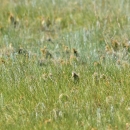About Us
Every spring and fall, the big sky country of northeast Montana is filled with the clamor of bird calls. With a bird list that includes 283 species, the primary role of the Medicine Lake National Wildlife Refuge is to conserve its diverse wetlands and grasslands as a refuge and breeding ground for migratory birds and other wildlife.
Our History
For the last 12,000 years, this region has been occupied by native peoples. In the 1700s, the Assiniboine tribe considered this area part of their traditional homelands. In the 1800s, the Sioux, Cree, and Meti settled here. The lake is known to the Sioux as Bde Wakhan, or (medicine waters). It was named for both the medicinal herbs and roots they gathered from its shores and their belief that the water had medicinal qualities. In 1976 the United States Congress further recognized the refuge’s significance by establishing the Medicine Lake wilderness area wilderness area
Wilderness areas are places untamed by humans. The Wilderness Act of 1964 allows Congress to designate wilderness areas for protection to ensure that America's pristine wild lands will not disappear. Wilderness areas can be part of national wildlife refuges, national parks, national forests or public lands managed by the Bureau of Land Management.
Learn more about wilderness area to provide an opportunity for visitors to observe wildlife in an atmosphere of solitude where the evidence of human influence is minimal.





